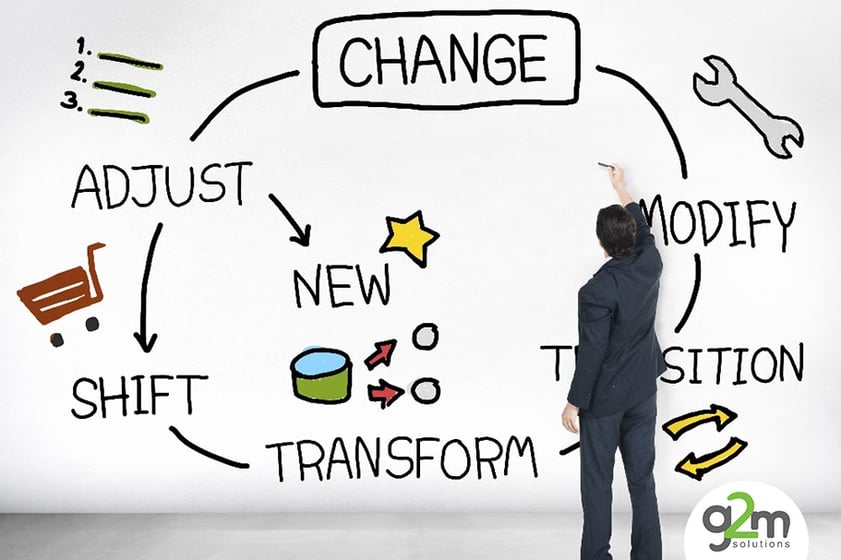Get WISER with Your AI Prompts - A guide for sales managers
Everyone’s wittering on about AI like it’s the second coming. But here’s the rub: if you give it half-baked prompts, you’ll get half-baked answers....
4 min read
 Chris Fell
02/08/2016 9:30:00 AM
Chris Fell
02/08/2016 9:30:00 AM

The implications for your firm are profound.

Now you must wield influence over your buyer remotely, without direct contact, and without even knowing if a buyer is actively looking for a solution. Failure to get found by buyers means losing control of the buying cycle, and to risk ceding control to the competition.
All CEOs, from the smallest firm to the largest conglomerate, must consider changing these three components of their sales and marketing.
It's the right time to refresh your go-to-market plan.
With the buyer firmly in control of their purchase process, it's critical to ensure your sales and marketing plan is in step with this brave new world. It starts with a clear focus on your target buyer personas, their goals and challenges, their information gaps and where they go to seek the information they need.
Sales and marketing alignment has always been a challenge in the complex world of B2B. Stop asking yourself, is it marketing that needs to align with sales, or is it sales that needs to align with marketing. Instead align both your sales and marketing teams around the buyer and the purchasing journey they take.
The tactics that sales and marketing teams have used in the past are failing to work effectively in engaging your target customers.
Legacy tactics such as outbound emails to purchased lists and cold calling are yielding increasingly poor returns for marketers and sales people alike. Buyers simply don't engage that way in the same numbers anymore. Vendors using these tactics have to double or triple their efforts to find the same number of leads. As a result, the effectiveness of your sales and marketing “engine” suffers. Think of a car engine that's never serviced, over time it costs more and more per kilometre to run; it consumes more fuel to achieve the same outcome.
The less effective your tactics become the greater your cost of sales.
Instead, take advantage of less expensive inbound digital tactics that allow your target audience to find and engage with you online. Obviously your website and social media presence play a key role here. Blending proven outbound tactics with newer inbound tactics provides the optimum approach for most companies.
The value proposition of technology is simple. Do more with less; usually less people. People are expensive, they get sick and they make mistakes. They are hard to find and even harder to keep. Therefore, the argument goes, technology reduces cost and risk and it systemises a firm’s processes.
Historically, implementing technology has been fraught with issues and has required a large up-front investment. The good news is that the emergence of the “as a service” business model has radically shifted the risk associated with implementing technology. The “freemium” model and free trials, means firms can experiment in a sandbox environment and work out the kinks before deciding to deploy across the company.
Rampant innovation in sales and marketing technology applications has seen prices plummet. Small and medium firms can deploy affordable, scaleable solutions for only hundreds of dollars a month. Since barriers to entry are low, agile firms can use technology to compete effectively with their bigger spending rivals.
Conversely, the risk to laggards is acute. If a firms fails to deploy technology effectively, the cost of acquiring a customer will not fall, and contribution margins will suffer. In short, they’ll need more people to do the work, or alternatively, just be able do less work and therefore generate less leads. Either way – the laggards lose.
Perhaps the most positive outcome of the deployment of sales and marketing technology is the visibility that it creates. Straightforward, out-of-the box reporting is available with all good technology platforms. It provides managers and team members alike with a dashboard of data that helps the team understand what is and is not working. It also allows the marketing and sales team to be held accountable to targets that are directly related to the firm’s business goals. Applying the lessons learned to subsequent campaigns drives up each campaign’s ROI noticeably.
In most small to medium sized Australian businesses, it falls to the CEO to drive change across these three sales and marketing pillars of plan, process and technology. Creating the time and the methodology to do this can be a challenge. If you’d like to investigate how to start this process and explore the topic further we’d be happy to talk to you, understand your business a little further and make some concrete recommendations. Book some time with our experts here.
Alternatively - you might like to explore this topic further by reading this complimentary short eBook on the topic - 3 Reasons It's Time To Redesign Your Sales & Marketing. Click the button below to get started:
You can also subscribe to our 'Growth Blog' to stay up-to-date with related topics that will help you grow your business. If you like this post, remember to share it on your favourite social platform too!
Subscribe to our latest news and updates on HubSpot.

Everyone’s wittering on about AI like it’s the second coming. But here’s the rub: if you give it half-baked prompts, you’ll get half-baked answers....

The business world is falling head over heels for AI—and who can blame it? With promises to reduce grunt work, uncover insights, and turbocharge...

Search is evolving - fast. For two decades, SEO has revolved around Google’s algorithm: keywords, backlinks, metadata, and page speed. But with the...